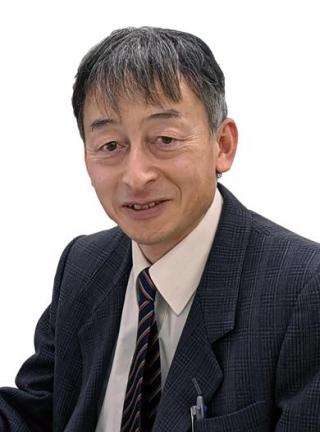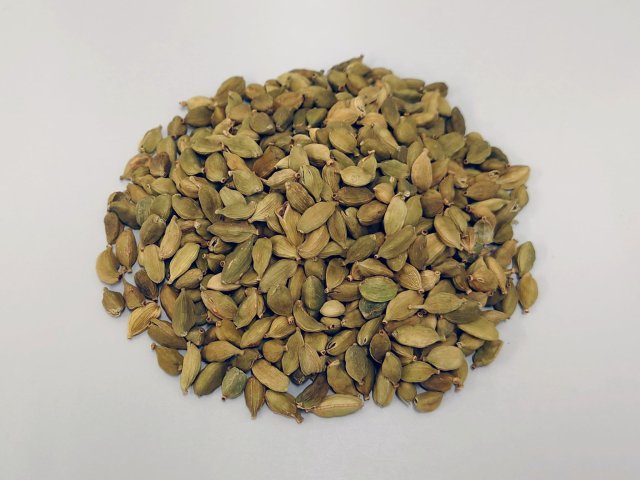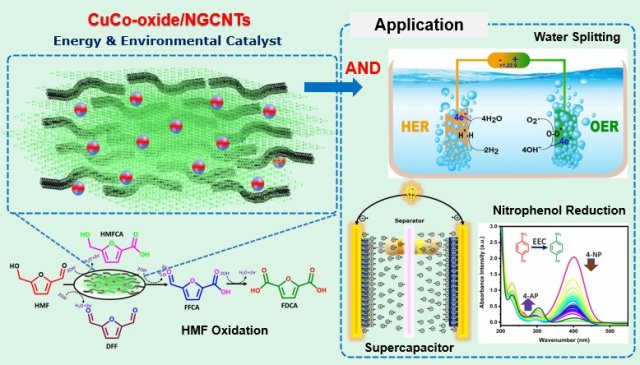【Research Highlight】Polyphenols epigallocatechin tetramer/pentamer, chemically synthesized for the first time in the world
- Share
- Tweet
- Send to email
Nature has given us a number of naturally occurring organic compounds (natural products) that have special chemical structures that make them difficult to synthesize from scratch in the lab, and/or are highly functional. Even with today's advanced science, many more natural products that may be useful to us, such as the compounds found in bacteria by Dr. Satoshi Omura who received the Nobel Prize in 2015, are believed to remain undiscovered in nature. Such natural products are the research focus of Professor Hidefumi Makabe, a member of the Institute of Agriculture, the Academic Assembly Schools of Science and Technology in Shinshu University. He has been working to identify such natural products, artificially synthesize and improve them in order to demonstrate the benefits of the substances that are obtained only in minute quantities from nature, and put them into practical use.
The patented technology we are featuring here concerns the chemical synthesis of epigallocatechin oligomers, a type of proanthocyanidins which is one of polyphenols that may potentially inhibit metastasis of cancer cells. These compounds hold the promise for the development of completely new types of functional foods or the uses as reagents. - Ayu Yanagisawa
..... Excerpt from Shindai NOW (Shinshu University's public relations magazine), No. 127, published on May 31, 2021
Utility of natural products found in nature
Catechin is a type of polyphenols that is well known for being found in wine and tea. Catechin has a number of analogs. The compounds Professor Makabe has successfully synthesized, called epigallocatechin oligomers, are polymers (oligomers) which consist of epigallocatechin molecules that are intricately bound with one another. A polymer may be called a tetramer, pentamer, and so on, depending on the number of molecule subunits that form it. Generally, natural products with higher degrees of polymerization are known to have a greater variety of biological activities. Of the epigallocatechin oligomers successfully synthesized by Professor Makabe, the epigallocatechin tetramer was shown to have higher functionality, and suppress the expression of a gene involved in metastasis.
While there have been successful cases of syntheses of catechin and epicatechin which is abundant in nature, Professor Makabe achieved the world's first success in chemical synthesis of epigallocatechin oligomers. Indeed, the tetramer and pentamer of epigallocatechin are highly unique compounds, and have never been found in isolation in nature. “These were unfound natural products although we had been expecting their existence” said Professor Makabe. Although it had recently been found that okra seeds contain them, the discovery was only of a mixture of 4- to 15-mers, and their exact structures or characteristics remained unclear. What is more, many of such natural products can only be extracted from nature in miniscule quantities, regardless of how useful they may be.
“As such, with many of the natural products found in nature, the higher the molecular weight is, the more complex and chemically unstable the compound is. For this reason, it is often the case with high-molecular-weight natural products that we cannot learn their characteristics and structures in detail until we chemically synthesize them,” said Professor Makabe.
Cancer-fighting and more: the great potential of epigallocatechin oligomers
Professor Makabe's specialty is natural product synthetic chemistry. Many of substances used in pharmaceutical products and agricultural chemicals have their roots in nature. Focusing on natural products found in grapes, adzuki beans, and tea, Professor Makabe has developed techniques to identify, isolate, and purify a target substance, determine its chemical formula, and then artificially synthesize it.
“Chemical synthesis of an oligomer becomes far more difficult when it has four or more subunits. When you are trying to synthesize a compound, you need to induce chemical reactions using reagents, and activate the substance. But because substances with higher molecular weights are less reactive, deciding on what reagent to use and what experiments to perform was extremely tricky,” said Professor Makabe.
The reagent Professor Makabe used to experimentally synthesize epigallocatechin oligomers was called Lewis acid. When you use a strong Lewis acid, it can cause a chemical reaction to go out of control, and you end up with producing various polymers all mixed up together. To circumvent this, Professor Makabe chose a special form of Lewis acid that contains a metal called ytterbium (Yb), which induces relatively mild reaction. He conducted experiments repeatedly by controlling temperatures and other conditions, and in 2018, succeeded in the world's first chemical synthesis of epigallocatechin oligomers. He said that it had been over a decade since he first turned his focus towards polyphenols of natural products in 2005.
From functional foods to reagents: looking for collaborative development opportunities to bring technology into practical use
Profile:
Hidefumi Makabe received a PhD in Agriculture from Tohoku University in 1997. He was a Japan Society for the Promotion of Science (JSPS) Overseas Research Fellow (at Purdue University, USA) before joining the Faculty of Agriculture, Shinshu University in 1999. He took his present post in 2011. He has also served as the Deputy Director of the Institute for Biomedical Sciences, Interdisciplinary Cluster for Cutting Edge Research, Shinshu University since 2019.
Professor Makabe has also been exploring the functionality of the epigallocatechin oligomer through collaborative research with Hiroshi Fujii, a professor of the faculty of agriculture of Shinshu University. The activity to suppress the expression of the gene promoting cancer metastasis mentioned earlier was discovered over the course of this collaborative work. The new compound may also have an antioxidant effect, abilities to reduce obesity and prevent hypertension and other lifestyle diseases, as well as an antiviral activity. If the mechanisms of these biological activities become clear, it may encourage re-assessment of the functionality of agricultural products, such as okra which contains polymers of epigallocatechin.
The challenge here is the improvement of yield. All chemical synthesis processes generate side products. So far, Professor Makabe has achieved a yield of approximately 50%, and aims to bring it up to around 80% with possible practical applications in view. He also has an eye on synthesis of polymers with even more subunits.
This chemical synthesis technology was the first step on the road to putting the epigallocatechin oligomer to practical use. The most promising area of application is the use as a reference compound. Not only do extracts from agricultural products contain epigallocatechins with varying degrees of polymerization, but their structures also vary significantly from one another. In order to understand the characteristics of their components, use of a reference compound as an indicator is indispensable. Furthermore, if the functionality of a reference compound is demonstrated, it may lead us to identify vegetables or fruits, or even their processing residues that are rich in the compound, and turn them into ingredients of functional foods or materials. This represents another area of possibilities for Professor Makabe to work with reagent or food product manufacturers.
Many polyphenols are found in higher concentrations in parts that are not usually eaten, such as apple peel and grape stems. “I speculate polyphenols are what fruits produce to protect themselves. That is why they have such high functionality,” argues Professor Makabe, who has discovered, and eventually pulled out complex – almost mysterious – abilities of nature. We can expect more exciting things from his further work.







